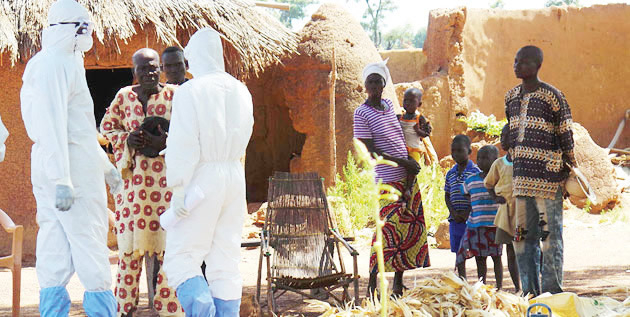The two cases were confirmed by the laboratory of the National Institute of Biomedical Research in Equateur Province, northwestern DRC, said the source.
NAN reports that in the 2014 to 2015 outbreak, 11,000 people died, mainly in Sierra Leone, Guinea, and Liberia.
The last outbreak of Ebola in the DRC was in 2014 and killed more than 40 people.
Of the nine people suspected to have contracted the deadly virus, three died, with one case of Ebola confirmed through tests at the national laboratory in the capital Kinshasa, WHO Congo representative Allarangar Yokouide said in a statement.
People began to get sick on or after 22 April in Bas-Uele province in the country’s far north, he added.
The region affected lies 1,300km north-east of Kinshasa, close to the border with the Central African Republic.
“It is in a very remote zone, very forested, so we are a little lucky. But we always take this very seriously,” WHO Congo spokesman Eric Kabambi said.
The WHO described the outbreak as “a public health crisis of international importance”.
It said the first teams of experts, including epidemiologists, biologists, and hygiene specialists had been dispatched and were due to arrive in the affected region by Friday or Saturday.
No need to panic: Tulip Mazumdar, BBC Global Health correspondent
While this outbreak will be extremely worrying for communities in this remote part of northern DR Congo, it is important to remember that the country has stamped out more Ebola outbreaks than any other place on earth.
It is well practiced in fighting the deadly virus.
Ebola was first identified in DR Congo (then Zaire) in 1976.
Since then, there have been at least eight in the country.
The last was in 2014, when – at the same time – parts of West Africa were fighting a separate outbreak, the worst in history.
DR Congo was able to bring an end to its epidemic within four months. In West Africa, which had never experienced an Ebola outbreak before, it took two years.
Authorities in DR Congo will need to act quickly to contain the virus, and ensure it doesn’t spread to more populated areas.
This time, for the first time, health officials have another weapon they can use. The world has an experimental vaccine that could be deployed if needed.




Discussion about this post